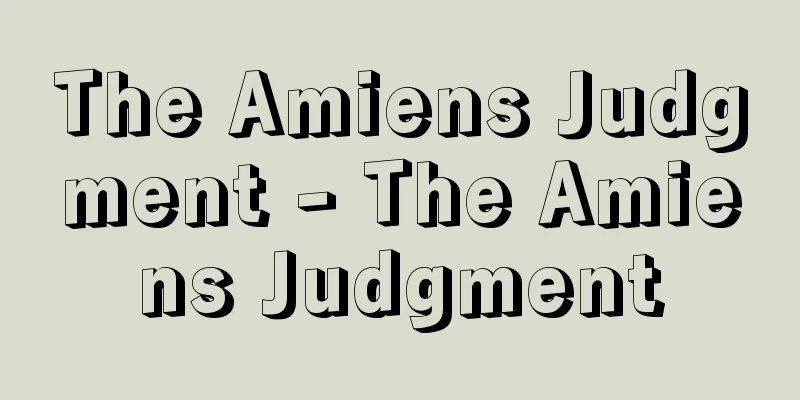Appeal - Sogan

|
The previous term for the act of requesting a specific administrative agency to review an administrative action on the grounds that it was illegal or unjust. In the narrow sense, it refers to an act that is subject to the application of the Appeal Law (Law No. 105 of 1890). The Appeal Law was once the basis of the administrative litigation system, but it was structured as an administrative measure within the administrative agency rather than a system for redressing the rights of the people. As a result, the system was extremely flawed, with only matters that could be appealed (called the enumeration principle), an appeal had to be filed before a lawsuit could be filed (called the pre-appeal principle), the period for filing an appeal was very short and inconsistent, the review procedure was inadequate, and there were many doubts about the interpretation. The need for reform had been called for even before the Second World War, and in 1959 (Showa 34) the Appeal System Research Committee was established to improve the system, and after deliberations, the Appeal Law was abolished in 1987 and the Administrative Appeal Review Law (Law No. 160 of 1962) was enacted instead. The word "appeal" was no longer used. [Yasuhito Abe] [Reference] |Source: Shogakukan Encyclopedia Nipponica About Encyclopedia Nipponica Information | Legend |
|
行政作用の違法・不当を理由として特定の行政庁に対して、その再審査を請求する行為をさす従前の呼称。狭義では、訴願法(明治23年法律105号)の適用を受ける行為をいう。訴願法はかつて行政争訟制度の基本であったが、これは国民の権利救済制度というよりは行政庁内部における行政手段として構成されていた。そのため、たとえば訴願できる事項は法律に列記されるものに限り(列記主義という)、訴訟を提起するには訴願を経なければならず(訴願前置主義という)、訴願を提起すべき期間は非常に短く不統一で、審査手続も不備であり、そのうえ解釈上疑義が多いなど、きわめて不備な制度であった。第二次世界大戦前からその改正の必要が叫ばれていたが、1959年(昭和34)にそれを改善するための訴願制度調査会が設けられ、その審議を経て62年訴願法は廃止され、かわりに行政不服審査法(昭和37年法律160号)が制定された。訴願ということばも用いられないこととなった。 [阿部泰隆] [参照項目] |出典 小学館 日本大百科全書(ニッポニカ)日本大百科全書(ニッポニカ)について 情報 | 凡例 |
<<: Su Hanchen (English spelling)
>>: Soga no Shukyo Goshozome - Soga no Shukyo Goshozome
Recommend
Uruppu Island
An island in the southern part of the Kuril Islan...
Regional metropolis
The size of the metropolitan area (area) that a ci...
Shigekiyo Muramatsu
Year of death: 1695 (Genroku 8) Year of birth: Kei...
Sosuikyo Gorge
A gorge located about 2km downstream from Maruyam...
Choral Concerto
…In the 1980s, he produced many works in the fiel...
separate school
…This was to protect the educational rights of mi...
Stalker
A stalker is someone who relentlessly pursues a pa...
Visprat
…(1) Yasna (ritual book): 17 of the 72 chapters a...
parasitic castration
…In the old days, a castrated male horse was call...
Shomeimon-in
Year of death: 15 August 1257 Year of birth: Joan ...
Nilo‐Saharan
A group of African languages found in a wide are...
Cutting rice - Kirimaitori
〘 noun 〙① (from きり米②) A retainer of the shogunate ...
Tale of the Foot Soldier - Elephant Tale
A book on military strategy from the Edo period. T...
Ayers Rock
A rocky mountain located 440km (by road) southwest...
Silver bromide
A compound of silver and bromine. When an aqueous...









